By Andreas Themistocleous, APC Sports Consulting Ltd
Athlete welfare involves creating a safe environment for athletes while competing and training for their sport, as well as ensuring their safety and well-being away from the game. Additionally it involves the creation of an environment in which athletes can develop skills and competencies outside of sport that will add to their personal development and wellbeing, which is not related to sports.
The road to regulation of professional sports, in terms of the welfare of athletes, has been a very long and bumpy one. Following the full professionalization of sports and later Title IX, which solidified women’s right to sport participation, sport organizations discovered the need to address the issue of athlete welfare as a demand related to their investment.
The industry developed scientific methods for training and development, thus promoting physical health and skills building related to sports; on top, it developed athletic training and rehabilitation methods and addressed the issue of mental health in an equal manner to physical health. Additionally, a huge investment was made to involve athletes in the community, raise awareness on social responsibility, overall indulging athletes to get involved and to create ties with society, on a different level, which benefited all parties involved. Athlete welfare, however late, addressed issues of harassment, abuse, doping, substance abuse and several other sociological issues that affected athlete performance and athletes’ life in general, as we should not forget that athletes weren’t and aren’t always victims, but can also be assailants or perpetrators, which obviously jeopardized their sport standing in a serious manner.
A more recent development related to athletes’ education, the concept of a dual career was developed to address the needs of athletes to create career outlets and options beyond the sport industry and also exploit their full potential, to address needs that surfaced post sport careers and ensure that athletes have educational skills to complement any other skills to be used in the job market. The specific element of financial education, an even newer component, emphasizes the needs of athletes to understand their personal financial interests, navigate through the risks of personal financial management and prepare them to safeguard their resources from the hard work they put in during their sport careers. Education promotes entrepreneurship, as well as ads value, allowing athletes to develop entirely new revenue-generating streams.
A never-ending debate that comes natural to the issue relates to “what’s next”. The never-ending cycle needs to continue to progress and the industry demands, undoubtedly, make this debate relevant and current. In my estimation, the current issue of financial education is the next best thing. Starting to grow slowly, but progressively, the industry needs to implement strategies to include financial education in all operations related to athlete welfare. Small signs have started to emerge, but we are far from where we should be in educating athletes on financial matters that pertain to their future. The USA, Europe and Australia are the front runners and opinion makers in the matter and are actively expected to make strides towards that. Now, more than ever, with income and revenue seriously damaged by the pandemic, athletes will need close monitoring of their financials in order to avoid serious financial risks.
In addition, the climate crisis will require leagues and athletes to shift their attention to how they will safeguard the health of athletes, especially those in outdoor sports. The elements we once discussed as science fiction, will surface in the next twenty years as essential components for athletes’ health and wellbeing; whether it may be exposure to sunlight, air pollution, depletion of water which makes artificial surfaces the only viable option in sports. The climate crisis can seriously alter the outdoor sports as we know them today.
In the recent future, the industry will also need to make a key switch in order for athlete welfare to flourish and the industry to survive. Going out on a limb, I would argue that we should expect a huge concentration of financial resources on only those sports and leagues that can create big revenue streams and attract big interest and following. The pandemic, the huge rise of e-sports, the continued global economic uncertainty, make the current industry model of athlete compensation and reward unsustainable. There are already huge debates whether or not the salaries and money invested in players rights are realistic, ethical as a concept and also sustainable for the market and industry economics. If we can expect soccer and basketball to survive worldwide, if we can expect the five major leagues in the US to survive (ice hockey and soccer given they are nowhere near the other three in terms of spending – look at the XFL too) the question remains what will happen to other sports. What is the future of Olympic athletes in an environment where governments are in constant pressure to cut spending, corporations are quick to sacrifice the non-essentials and sports are growing in terms of leisure, health choice and lifestyle, but not as for-profit entities? Not unrelated to the above, is the ability of US-based universities to maintain the sport scholarship system now in place, while keeping all the sports under their current program. No doubt it will then affect high school sport programs too, as this is a snowball effect.
In essence, I expect that by 2030 and beyond many sports will turn to organized activities for reasons not related to competition or profit. Community-based and organized sports will grow, but professionalism in sports will be suppressed, sacrificing resources on only those sports and leagues that can produce big money. Even the most successful leagues will have to readjust their remunerations to remain competitive. The TV broadcasting product is already suffering from a shift in consumer behavior related to expectations and needs, with viewers’ attention spans being decreased dramatically and their need for interaction heightened (though or not sports is irrelevant). Look at the ratings for the World Series or the NBA Finals over the last decade or so, in case you are wondering. Expect overflooding of youth leagues in high-income sports and loss of interest in others. Expect less student-athletes at the high school level, given the decreased opportunity to compete in the NCAA. Overall, athlete welfare will become crucial in terms of the survival, not only sustainability of athletes, provided leagues can remain committed to the task. Number of pros decreasing will mean that the focus will be placed on lesser numbers but will be heightened.

